


APRIL 2024
LAQ members’ publication www.infolympho.ca 1 866 979-2463 IN THIS ISSUE Communication quartet WRITE TO THE HEALTH MINISTER And more...
The

Lymphology & Cicatrex Func tionalit y
What is MOBIDERM ?
MOBIDERM is a medical device for mobilizing the subcutaneous tissue. It consists of foam blocks enclosed between two non-woven fabrics. The MOBIDERM technology can be used under a relief bandage (in the form of a bandage or a pillow) or integrated into mobilizing garments.
Due to the pressure di erence between the contact surface of the blocks and their surroundings, it promotes lymph ow and optimizes drainage e ciency. This also has a positive in uence on wound healing, the optimized drainage e ciency favours wound healing due to the optimization of metabolism (removal of waste products through drainage).


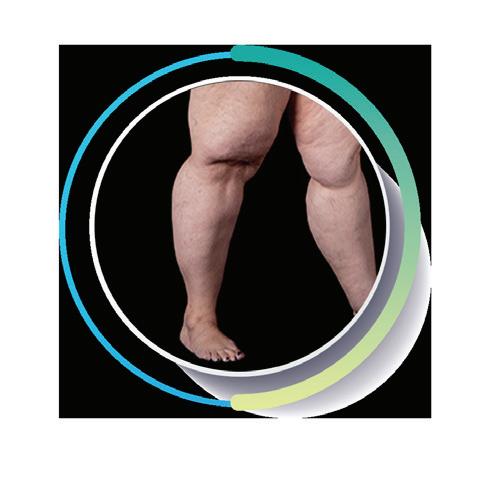
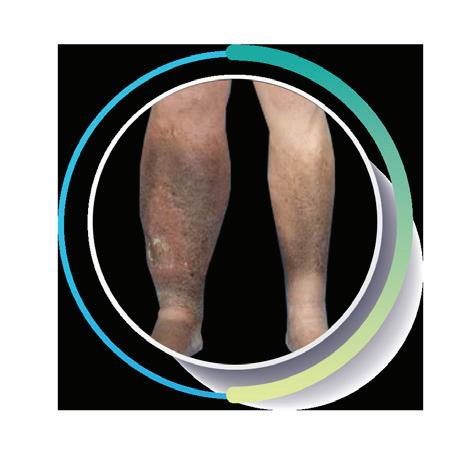

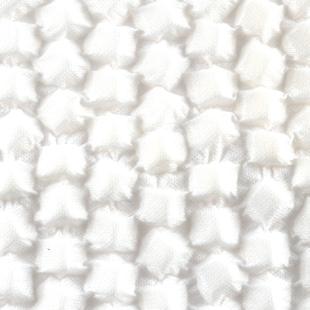
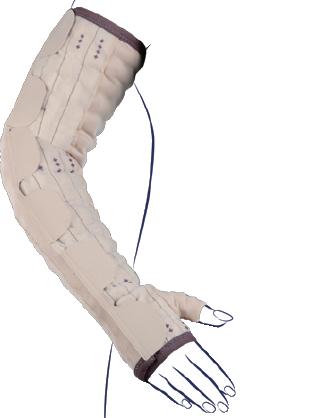


O cial Canadian Distributor T HUASNE Products . . . . 3232 Autoroute Laval Ouest, Laval, QC, H7T 2H6 WWW.ERP.CA 1-800-361-3537
Auto t
–
Mobiderm Autofit Standard Mitten ERP9095 Mobiderm Autofit Full leg ERP9091L Patented Device MOBIDERM Dermis Ep dermis Mobiderm Autofit Armsleeve Normal ERP9092
BY YOU and FOR YOU! THE LAQ
How the HEALTH system lost sight of decongestive TREATMENTS
Access to decongestive treatments is a concern in Québec be cause they are simply not covered by the RAMQ. However, the compression garments, bandages and accessories needed to treat lymphedema are covered by a comprehensive program. This discrepancy raises a number of questions. Without de congestion, how do you get into a compression garment and tolerate it without the risk of wasting it in the short term? How do we ensure safe decongestion under the supervision of a quali fied clinician without affordable access to treatment? And how did we get here?

For the record, let's recall that it was in April 2018 that the INESS submitted its report on the treatment of cancer-related secondary lymphedema. INESS writes: "Although complex decongestive therapy (CDT), performed for two to four weeks at a rate of 6 to 20 sessions, is the therapeutic modality for secondary lymphedema recommended by the majority of experts, no randomized clinical trial has evaluated the efficacy of this complex treatment, which consists of wearing low-elasticity multilayer compression bandages, manual lymphatic drainage, therapeutic mobility exercises, and skin care." "In conclusion, CDT could be an effective treatment, at least in the short term, to reduce edema volume (...). However, all the studies reviewed are of low level of evidence (III-3 or 4) and have significant gaps (...). In addition, it's difficult to compare the reviewed studies (...). Finally, in the majority of the trials, patient follow-up was very short, making it impossible to verify whether the observed reduction in edema was maintained over time. Therefore, it is not possible to draw any conclusions about the true efficacy of CDT at this time."
The current problem lies in those three words: at this time. That time was 13 years ago. It may be time to take another look at the
Second impasse: We may have thrown the baby out with the bathwater by focusing on the short-term effects of lymphatic drainage as part of complex decongestive therapy. Drainage is an adjunct to multilayer bandaging, which remains the foundation of the intensive decongestive phase.
The current problem is exacerbated by the lack of systematic screening of lymphedema in hospital protocols, making the intensive phase all too often unavoidable. The LAQ and experts advocate an intensive phase approach based on bandaging or hook-and-loop devices and patient education, all under the supervision of properly trained professionals.
It's time for health policy-makers to reassess this situation in the light of scientific advances and clinical experience to improve access to decongestive treatment for lymphedema patients.
Anne-Marie Joncas, President
APRIL 2024
ORIGINAL CONTENT
THE COMMUNICATION QUARTET
For harmonious communication that benefits the patient
The key to managing and controlling lymphedema is a multidisciplinary team working together. In the case of lymphedema, this team consists first and foremost of the patient, then the doctor, the certified lymphedema therapist and the orthotist or fitter.
In an ideal world, all of these people would have perfect backgrounds and a solid network to communicate with. As you may have guessed, this is not always the case.
At LAQ, we all too often see patients who have suffered the negative effects of a lack of communication within the healthcare team, or poor communication. A classic example is when a therapist or orthotist receives a prescription for less compression than they feel is necessary to control swelling. A call is made to the physician to reevaluate the prescribed therapeutic compression. The physician maintains the original prescription due to a lack of knowledge or confidence –without being open to the therapist's or orthotist's suggestions based on their expertise and experience.
Another example is that of a woman who was not only properly treated by her therapist, but also had the right prescription for the right compression. Her life was turned upside down when the fitter unilaterally decided to change the compression without consulting her doctor or therapist. Instead of the shoulder-to-wrist sleeve with a separate glove suggested by the therapist, the fitter fitted the patient with an elbow-towrist half-sleeve with an integrated glove because he thought the lymphedema was very mild. The consequences were significant: the lymphedema was uncontrolled without compression in the armpit area, the woman tolerated the compression garment poorly, the integrated glove interfered with her professional activities requiring frequent hand-washing, and finally, the expensive compression garment was wasted.
A common example: the patient mentions to the therapist that he doesn't like multi-layer bandages. Without exploring other options, such as alternative Velcro garments, the patient is fitted with multi-layer bandages. He removes them before the desired decongestion is achieved and stops the decongestive treatment.

Let's get it right together!
In the lymphedema management process, harmonious communication between the four key players is essential to ensure optimal outcomes. These are the patient, the physician, the lymphatic therapist and the orthotist. Each has a critical role to play in the management of the disease.
1. The patient's role is central to lymphedema management. They need to be informed about their condition, the treatments available and the self-management measures they need to take. Patients need to understand that they are responsible for wearing compression garments, maintaining adequate skin hygiene and adopting a healthy lifestyle. The patient must also be regularly encouraged to openly communicate his or her concerns and needs to other members of the care team. The patient must ensure that he or she has a complete copy of his or her record, including the physician's prescriptions and the recommendations of the therapist and orthotist.
2. The physician is responsible for diagnosing lymphedema and prescribing appropriate treatment, including compression. He or she plays a key role in monitoring progress. The physician will listen to questions and suggestions from the therapist and/or orthotist to adjust the treatment plan as needed. The physician will discuss with the patient how he or she feels about the changes caused by the lymphedema.
cThe lymphatic therapist is responsible for providing specialized care to reduce edema and improve lymphatic circulation. This may include multi-layer bandages, manual lymphatic drainage techniques, therapeutic exercises and self-management advice. In addition to monitoring progress over time, the therapist works closely with the patient to develop a personalized treatment plan that
meets the patient's goals. The therapist succinctly addresses questions and suggestions to the physician and provides an explicit compression plan to the orthotist/fitter.
4. Fitters play a critical role in the provision of compression garments. They take precise measurements to ensure that compression garments fit the patient perfectly and provide the appropriate level of compression, as prescribed by the clinician, taking into account the therapist's indications. Close communication with the therapist and, in some
A practical tool for reporting clinical situations
Most healthcare professionals use the SBAR method to communicate effectively with each other. SBAR stands for Situation, Background, Assessment, and Recommendation. The SBAR method helps to structure communication, present relevant information quickly and effectively, avoid omission of important information, and provide a reassuring framework for less experienced professionals.
Here is a summary of the information related to each of the elements to be covered in the SBAR communication.
cases, the physician, is essential to understanding the patient's specific needs and ensuring optimal fit of the compression garment. When interacting with the patient, the orthotistfitter pays particular attention to the patient's comfort and the reduction or stability of measurements.
By contributing to smooth communication, the patient, physician, therapist, and orthotist can greatly reduce the burden of lymphedema, avoid a host of difficulties and frustrations, and enable the patient to return to a full life.

Source of visual SBAR: Dr Francine Cheese (2023, November 6) «SBAR Communication Tool». Geeky Medics https://geekymedics.com/sbarcommunication/Accessed March 27, 2024.

To reach the Therapeutic Support Program (TSP) team, dial 514 979-2463 / 1 866 979-2463 and leave a message on our voice mail. Or write to aql@infolympho.ca
Find out more about the TSP
Please allow 24 to 48 hours for a response from a volunteer therapist.
IN REAL ACTION
Putting a face on lymphedema



We're starting to get your photos! Don't stop: we really need to build a strong photo bank to show the impact of lymphedema to health care decision makers and journalists.
You too: join the Photo Blitz.
Send us photos taken with your mobile phone:
• Before decongestion - with or without compression
• After decongestion - with or without compression
• While fighting cellulitis
• Any photos of lymphedema-related challenges you have faced
• Photo may or may not include your face - indicate if you would like us to blur your face
• Prefer neutral, uncluttered backgrounds
Please submit your photos to aql@infolympho.ca

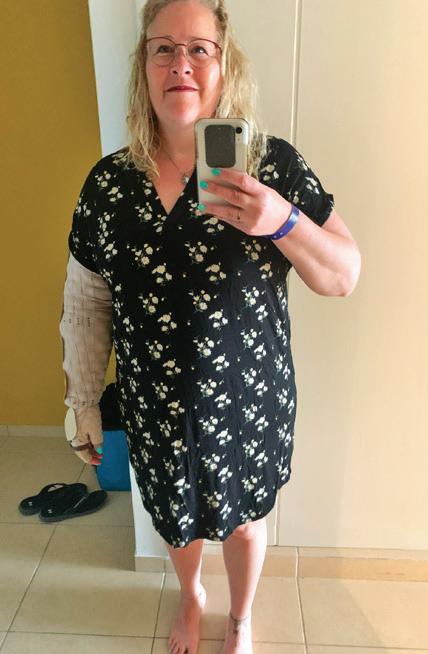
Copy, paste and complete the text below in your message:
Donating my photos to the LAQ. By donating my photos to the LAQ on this DATE MONTH YEAR, I, FIRST NAME, LAST NAME, grant the LAQ a right of general use, including but not limited to use in traditional media, websites, social media, which may be used for awareness, promotional or training purposes, and I waive all present and future recourse and compensation related to the use of these photos. I may revoke my consent at any time by sending written notice to aql@infolympho.ca, clearly identifying the photos submitted.
We archive your photos on a hard drive and identify them with the date and time of your email. Your name will never be associated with them, ensuring the promised anonymity.
Thank you all for making lymphedema more visible.
Together, it's less of a burden
Our website is now available in English! Full of information and advice, it’s an invaluable resource. You’ll find many essential tools to help you manage your lymphedema. And even tips to keep you motivated day after day! VISIT www.infolympho.ca/en NEW FOR OUR ENGLISH-SPEAKING AUDIENCE!
Enter the photo blitz
THE LAQ MAKES SURE YOUR PRIORITIES ARE HEARD
Promoting prevention and early detection of late effects of cancer, such as lymphedema du cancer comme le lymphœdème
On March 5, the LAQ participated in the meeting of the Comité national des milieux communautaires en cancérologie. On this occasion, the team of the Program québécois de cancérologie (PQC) presented the near-final version of the Action Plan 2024-2026, derived from its Orientation Plan 2024-2030.
Several aspects of these plans are encouraging for lymphedema. In this context, we read that "the detection and management of the sequelae of cancer and its treatments must be implemented, if not systematized". (Orientation Plan 2024-2030, p. 27)
Highlights of interest for the lymphedema field include:
⊲ Promoting prevention and early detection of late effects and secondary cancers in people treated for cancer. (Orientation Plan, Axis 3, Priority 3.5)
⊲ Developping follow-up mechanisms for the major late effects and complications of adult cancers, targeting front-line clinicians and people affected by cancer. (Action Plan - draft, Action 11)
⊲ With regard to the provision of care and support services throughout the care pathway (Policy Plan, Axis 6), priority orientations include:
• Ensuring access to the support services needed by patients and their families;
• Integrating effective symptom management, palliative care and end-of-life care early and throughout the care continuum, as appropriate;
• Optimizing the involvement of front-line services, community organizations and other partners in the planning and delivery of care and services;
• Supporting people in times of transition, especially after cancer (Orientation Plan 2024-2030, p. 30).
In addition to screening and follow-up, the LAQ emphasized to the PQC’s team the need for effective lymphedema management by the public health network. Lymphedema

patients are entitled to appropriate treatment as part of our universal health care system.
In both the Orientation Plan and the Action Plan, the PQC's commitment to advancing care for the after-effects of cancer, including lymphedema, is tangible.
For the LAQ, the overall reflection is truly encouraging. For us, it means nothing less than comprehensive lymphedema management in the context of cancer. We sincerely hope that our vision will meet the will of the PQC in the near future.
New LAQ group in Gaspé! With Chantal Leblanc, therapist 1st in-person meeting May 11 Learn more at aql@infolympho.ca
LYMPHEDEMA MONTH IN REVIEW
Impact and emotions
Throughout the month of March, the LAQ worked with Essity - our Diamond Partner - to spread the word about lymphedema on our social media channels. After 31 days of continuous posts on Facebook and Instagram and 2 online presentations for patients (March 21) and professionals (March 26), over 7565 people saw our educational and supportive messages and 146 people attended the online presentations. We can be truly proud of the work that was done. Hats off to Judith Lavoie, clinical resource for Essity.
A huge thank you to Essity for their invaluable contribution.
Lymphedema is not just a disease for me...
It's the stories of women & men living with this chronic condition.
It's the ability to walk to work with shoes that finally fit.
It's the ability of holding a grandchild in one's edematous arm without discomfort, while enjoying their joyful laughter. It's knowledge sharing with patients and healthcare professionals, as knowledge is what empowers us.
It's the meaning of kindness and compassion when helping patients manage a condition we often neglect in medicine. It's fighting for the voices of many who are often voiceless....
To all my dear patients, thank you for continuing to be my best teachers! May your voices always give us the strength to continue moving forward with lymphedema care.
Marize Ibrahim, Certified Lymphedema Therapist
Welcome New Members
The following new members joined us in March 2024.
Marie-France Choinière - Muriel BaurMonique Rioux - Chantal MeunierHeather Bilkes Johanne LoyerJocelyne Loyer - Isabelle Proulx-BironHélène Larochelle - Françoise DagouretMartine Simard
We welcome you and thank you for your support!
The Lymphedema Association of Québec is a patient association dedicated to the advocacy of people with lymphedema or at risk of developing lymphedema. For 25 years, we've worked tirelessly to advance this cause.
We are proud to have 219 regular and professional members, 30 corporate members and 63 service points.
Thank you also to our loyal members who renew their membership year after year. You are our reason for being.
LAQ DIAMOND PARTNER
Lymphedema Month
LEADING LAQ PROJECTS WITH YOU

Therapists' Viral Videos on our social media sites
Share your professional counseling videos on our Facebook and Instagram pages
Are you a certified lymphedema therapist and a member in good standing of the LAQ? We're offering you FREE, unbeatable visibility on our Facebook and Instagram pages.
Once a month, our subscribers will be able to see a Therapist Viral Video – a short video created by you. It's a well-known fact that when it comes to lymphedema, human contact is essential. That's why the LAQ invites you to participate in this mutually beneficial project.
It's so simple!
1. Choose a topic from the list below – or suggest one that's close to your heart.
2. Film yourself with your cell phone while giving your advice or explanation.
3. Send us your video
Thousands of people visiting our social media sites will benefit from your advice, and you'll make a name for yourself in your community.
To participate in the Therapist Viral Videos, talk to us for 30 to 90 seconds about:
• Signs of swelling
• Stages of lymphedema
• What to look for in a doctor's prescription
• The difference between lymphatic drainage and decongestive lymphatic therapy
• An example of a decongestive exercise
• Skin care in the spotlight
• A tip for self-bandaging
• Self-bandaging advice
• Identifying a well-fitted compression garment
• Bra fitting
• Finding the right shoes
• The usefulness of Velcro garments
• How to use the RAMQ program correctly
• How to prepare yourself for perfect measurements with your fitter
• Daily management advice
• Staying hydrated
• Weight Management
• Physical Activity
• Coping with sweat
• Coping with heat
• How to protect yourself from insects
• Travel Tips
• When spirit is low
• The importance of support from loved ones
• Tips for adjusting to work
• An answer to a common question
• Any topic that speaks to you
Begin and end your video with your name and city/region. The LAQ will distribute your video and provide your full contact information. The LAQ reserves the right to evaluate the content of your video. You can participate as many times as you like.
For more information about Therapist Viral Videos, write to aql@infolympho.ca or leave a message at 514 979-2463 –we will call you back.
Share your videos with us and become a Therapist Viral Influencer!
YOUR NEXT LAQ HOSTED SUPPORT GROUP MEETING

Yoga Benefits and Lymphedema
Your next online education and support group takes place on April 11, 2024, at 7 p.m.
Discover the benefits of yoga for people at risk of lymphedema or living with lymphedema. This practical session is led by CHANTAL LAPOINTE, a certified therapist at CHU Sainte-Justine
Think you're not flexible enough for yoga? Think again: this slow gymnastic activity is accessible to everyone and ideal for circulating lymph!
ZOOM presentation in French. Bilingual Q&A. This free event, organized by the LAQ, will take place on Thursday, April 11 at 7 p.m.
Free and MANDATORY registration by clicking here
We look forward to seeing you!
This lymphedema event is made possible by the dedication of volunteer therapists and the Lymphedema Association of Quebec. The LAQ's mission is to support people at risk and those affected by lymphedema, while raising awareness of lymphedema as a chronic disease among health professionals.
Thank you to our donors
You came through for us during Lymphedema Awareness Month! Your generosity resulted in a total of $445 in spontaneous donations to the LAQ. And that's not counting the financial support many of you gave to the change.org platform to promote the MUHC Lymphedema Clinic petition.
A huge thank you to all of you!
Take advantage of tools designed just for you!
Your LAQ membership entitles you to exclusive benefits!
FOR MEMBERS ONLY
• Monthly newsletter L’info AQL
• Printed quarterly Pathways magazine
• Self-management booklet Learning to take charge
• Cellulitis Assistance Card
• Self-measurement guidelines for arms and legs
• L’info AQL Surgery edition
• VIP invitations for support education and groups. plus events
• Your tools are mailed to you AND accessible in your online Member Section
The annual dues for Regular Members are $42.
Not yet a Professional or Corporate Member?
The LAQ offers exceptional visibility and tools to support your services. Learn more and join today!
MEASURE your improvements
Here is our tape WITH guidelines



To make it easier to monitor your self-management and evaluate your progress, get a LAQ measuring tape. Our tapes come with detailed, illustrated instructions.
Developed by LAQ therapists, the arm or leg self-measurement guidelines will be an invaluable tool in your daily management routine.
Buy your tape at the Store of Hope
TIP OF THE MONTH
WATCH YOUR WEIGHT
Weight management is critical to reducing the progression of lymphedema. Accumulated fat puts a strain on tissues and the lymphatic system. This can lead to lymphedema progression and complications. Therefore, the body fat index, which is very different from the body mass index, should be monitored. In addition, the possible influence of diet on inflammation needs to be explored and scientifically proven - lymphedema has an inflammatory component in addition to the problem of lymphatic effusion.
If you're overweight, start by being physically active, then make smarter food choices based on Canada's Food Guide
Want to know how your Body Fat Index compares to your age? Calculate your BFI here

© Lymphedema Association of Québec. PRINTING AND DISTRIBUTION PERMISSION: Reprinting is permitted for personal use only. Content may be distributed/shared only with written permission from the LAQ. Request authorization at aql@infolympho.ca





























